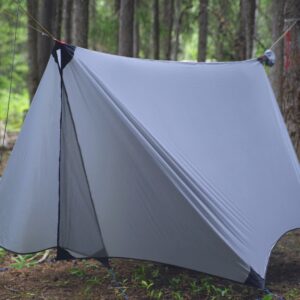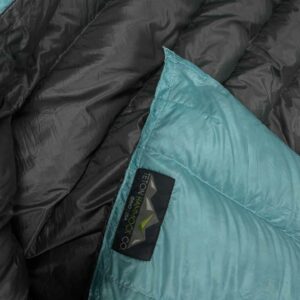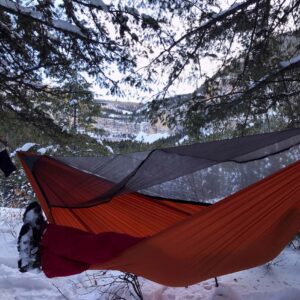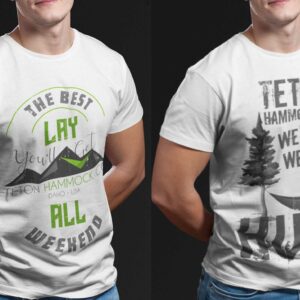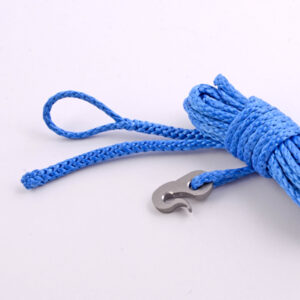Treating your expedition gear with respect is an important part of adventuring, in fact it can be life saving, time saving and money saving. When we use and take care of our gear properly, it can last a lifetime and preform it’s best.
Hammocks are often seen as a luxury item in the outdoors, however, we see them as important as any other gear we take. The hammock functionally replaces your sleeping pad and tent. Many people misuse hammock gear in
dangerous and irresponsible ways that other gear would never see.
Here are 6 ways to hang safe in hammocks;
It is tempting to swing in a hammock like a toy swing. Hammocks are simply not made for this function. Although our straps are rated for 1600 pound breaking strength, physics will wear and stress your straps past this rating. There is already a lot of pressure and stress on the straps, fabric, and trees- but under normal wear and tear they will preform perfectly and not break. When anyone begins swinging in a hammock, the centripetal force is increased with speed and mass- which puts extra stress on the straps and hammock fabric. This will lead to breaking a strap or ripping your hammock down the middle!
Next consider the friction that is happening while you swing. As the friction increases, the heat applied to the strap and metal hooks will increase and burn through your straps.
Hammocks are made for gently swaying, not intense swinging! If you want something like this, find a product made to take the stress and friction! #swaydontswing
2. Single layer hammocks only
Many people enjoy making hammock bunk beds in the trees where they stack the hammocks on top of each other and climb the straps like a ladder. Not only does this provide a falling hazard, it prevents the hanger from properly hanging the hammock the higher you go. A strap could fail, someone could fall on other person. Take this slogan as a rule of thumb “Don’t hang higher than you’re willing to fall”
3. Use Weight Bearing structures
Always consider what the pillar or pole was intended for before hanging. Most solid structures will be able to hold the weight of a hanger but make sure you’re always hanging on weight bearing structures. Examples of safe things to hang on; Wood (such as tree trunks), Metal (hammock stands). Examples of unsafe things to hang on; Brick, masonry, rotted or dead trees.
4. Check surroundings
Make sure there are no widow makers hanging near where the hammock is being set up. If a tree isn’t sturdy or sways when you sit in your hammock, don’t hang on it.
5. Do a weight test
Before jumping into a hammock, slowly ease into it to ensure it will support your weight. Check that the straps aren’t slipping or moving.
6. Have proper gear
This will protect you, and the trees. Make sure the gear is in good condition, if it’s wearing, it will need to be replaced or repaired. If using carabiners, ensure they’re climbing grade so they’ll hold your weight. Use wide straps around the trees.
Other backpacking gear is taken seriously, take hammocks seriously too. They’re gear, not toys! Would you jump on your air filled sleeping pad like a trampoline? NO, it’s not a toy, and neither is your hammock :)









